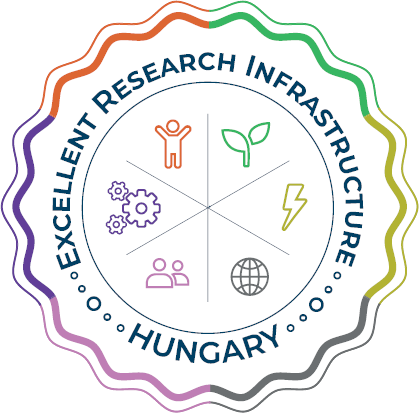The past 85 years of the Balaton Limnological Institute
of the Hungarian Academy of Sciences, Centre of Ecological Research (Tihany)
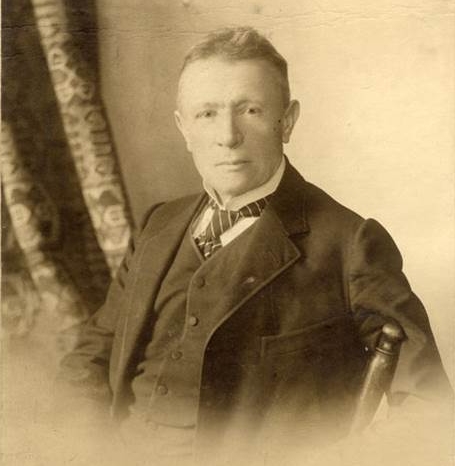 Lake Balaton with its 596 km2 surface area is on the list of the largest lakes in Europe (Lake Ladoga: 17600 km2, Lake Onega: 5995 km2, Lake Geneva: 580 km2, Lake Constance: 536 km2). Since the average depth of the lake is only 3.25 m, as a result of intensive wave action lake water is oxygen saturated, and due to the constant sediment suspension and biogenic lime precipitation is very turbid. The water of the lake is oligo-mesotrophic (or excellent-good), although during the period 1970 – 1990 it was eutrophic-hypertrophic. In addition to the rich plankton life, it has significant wildlife in the littoral zone. The lake has 44 native species of fish and 22 non-native species on a permanent or temporary basis. The Balaton Limnological Institute of the Hungarian Academy of Sciences (MTA) Centre for Ecological Research is the leader of academic, water protection and aquacultural research of Lake Balaton since 1927. At the time of its establishment the Hungarian Biological Research Institute (later known as the MTA Institute for Biological Studies and the MTA Balaton Limnological Research Institute) was in the top 100 independent research facilities of the world.
Lake Balaton with its 596 km2 surface area is on the list of the largest lakes in Europe (Lake Ladoga: 17600 km2, Lake Onega: 5995 km2, Lake Geneva: 580 km2, Lake Constance: 536 km2). Since the average depth of the lake is only 3.25 m, as a result of intensive wave action lake water is oxygen saturated, and due to the constant sediment suspension and biogenic lime precipitation is very turbid. The water of the lake is oligo-mesotrophic (or excellent-good), although during the period 1970 – 1990 it was eutrophic-hypertrophic. In addition to the rich plankton life, it has significant wildlife in the littoral zone. The lake has 44 native species of fish and 22 non-native species on a permanent or temporary basis. The Balaton Limnological Institute of the Hungarian Academy of Sciences (MTA) Centre for Ecological Research is the leader of academic, water protection and aquacultural research of Lake Balaton since 1927. At the time of its establishment the Hungarian Biological Research Institute (later known as the MTA Institute for Biological Studies and the MTA Balaton Limnological Research Institute) was in the top 100 independent research facilities of the world.
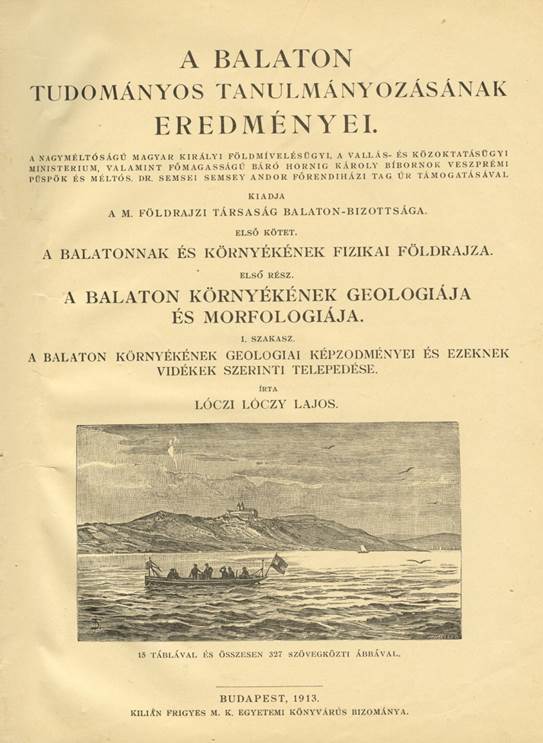 Concerted scientific study of the Lake Balaton was started by the Balaton Committee of the Hungarian Geographical Society in 1891. In the following 29 years scientists described in detail the geological history of the lake, its main physical, chemical and biological characteristics, and explored the archaeology and contemporary social status of the surrounding areas. These studies were summarized in the 32 volume series of the "Results of the Scientific Study of Lake Balaton" in both Hungarian and German edited by Lajos Lóczy. This pioneering work of the Hungarian scientist Lajos Lóczy on Lake Balaton was published at the same time as the great works of Swiss scientist F.A.M. Forel: "Le Léman I" (1892), "Le Léman II." (1893), "Le Léman III." (1904), "Algemeine Limnologie" (1901).
Concerted scientific study of the Lake Balaton was started by the Balaton Committee of the Hungarian Geographical Society in 1891. In the following 29 years scientists described in detail the geological history of the lake, its main physical, chemical and biological characteristics, and explored the archaeology and contemporary social status of the surrounding areas. These studies were summarized in the 32 volume series of the "Results of the Scientific Study of Lake Balaton" in both Hungarian and German edited by Lajos Lóczy. This pioneering work of the Hungarian scientist Lajos Lóczy on Lake Balaton was published at the same time as the great works of Swiss scientist F.A.M. Forel: "Le Léman I" (1892), "Le Léman II." (1893), "Le Léman III." (1904), "Algemeine Limnologie" (1901).
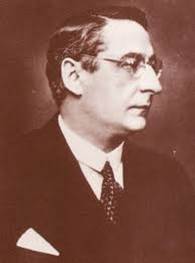 The impact of these impressive series of works on the cultural policy of Hungary was so significant, that in 1926 the Minister of Public Education and Religion Kunó von Klebelsberg, supported by the Hungarian Prime Minister István Bethlen, established the first Hungarian Biological Research Institute in Tihany. The world success of Lóczy’s work prompted von Klebelsberg to build the institute on the lake shore so that "the aquatic life can be studied in its sparkling vivacity on the site”. After all, "most of the water organisms are transparent; with adequate magnification and lighting we can see the whole living body, we see not only the physical appearance but also all the organs, the pulsing heart, the single blood cells ejected from it, the stomach’s functions, the bowel movements and the other life functions which in more complex bodies can only be demonstrated after dissection. However, water organisms are extremely fragile and can easily die. Therefore to study them the opportunity should be given on the spot by the establishment of a research institute set up by the water "- was said by Kunó von Klebelsberg at the opening ceremony on 5th September 1927.
The impact of these impressive series of works on the cultural policy of Hungary was so significant, that in 1926 the Minister of Public Education and Religion Kunó von Klebelsberg, supported by the Hungarian Prime Minister István Bethlen, established the first Hungarian Biological Research Institute in Tihany. The world success of Lóczy’s work prompted von Klebelsberg to build the institute on the lake shore so that "the aquatic life can be studied in its sparkling vivacity on the site”. After all, "most of the water organisms are transparent; with adequate magnification and lighting we can see the whole living body, we see not only the physical appearance but also all the organs, the pulsing heart, the single blood cells ejected from it, the stomach’s functions, the bowel movements and the other life functions which in more complex bodies can only be demonstrated after dissection. However, water organisms are extremely fragile and can easily die. Therefore to study them the opportunity should be given on the spot by the establishment of a research institute set up by the water "- was said by Kunó von Klebelsberg at the opening ceremony on 5th September 1927.
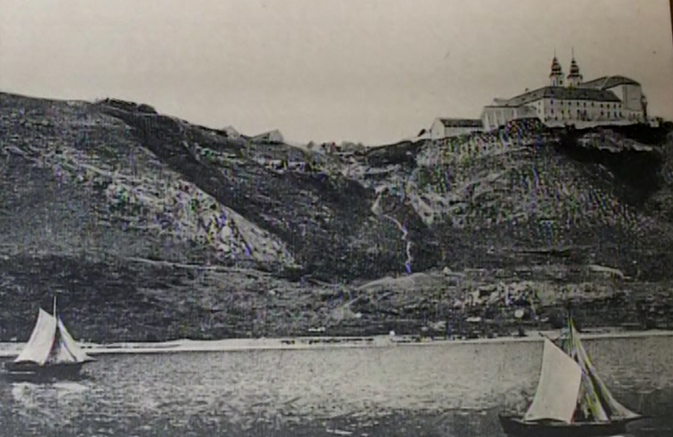 Laboratories of the Institute were equipped on the basis of the Anton Dohrn Zoological Station of Naples established in 1873. Nevertheless, laboratories in Tihany were equipped to an even higher standard, i.e there was not only gas, vacuum, compressed air and drinking water in every laboratory, but also Lake Balaton water and sea water were provided. Water from Lake Balaton was pumped up to huge tanks on the top of the main building, while sea water was transported to the site on a barge from the Black Sea via the Danube and the Sió Canals and was
Laboratories of the Institute were equipped on the basis of the Anton Dohrn Zoological Station of Naples established in 1873. Nevertheless, laboratories in Tihany were equipped to an even higher standard, i.e there was not only gas, vacuum, compressed air and drinking water in every laboratory, but also Lake Balaton water and sea water were provided. Water from Lake Balaton was pumped up to huge tanks on the top of the main building, while sea water was transported to the site on a barge from the Black Sea via the Danube and the Sió Canals and was
also stored in tanks in the attic.
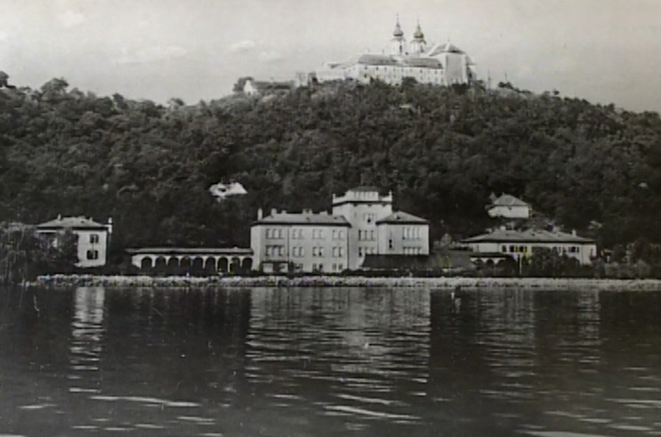 The Institute had its own shoreline, pier, research boat, boat house, aquarium rooms and an aquarium display area for the public. In addition to the main building, residential buildings were also built, along with a fully furnished study house which now operates as a guest house with full board. The Tihany Institute was initially integrated into the University of Collections. It has remained in close contact with the Hungarian National Museum, and since 1952 it is the part of the Hungarian Academy of Sciences.
The Institute had its own shoreline, pier, research boat, boat house, aquarium rooms and an aquarium display area for the public. In addition to the main building, residential buildings were also built, along with a fully furnished study house which now operates as a guest house with full board. The Tihany Institute was initially integrated into the University of Collections. It has remained in close contact with the Hungarian National Museum, and since 1952 it is the part of the Hungarian Academy of Sciences.
Until 1956, two departments comprised the Institute, one on Balaton research and the other on general physiological studies. The first head of the Balaton Department was Professor Béla Hankó, a world-famous researcher of the Adriatic Sea, while the head of the Physiological Department was physiologist Frigyes Verzár. In 1929, the Ministry of Culture called back home from the Netherlands the zoologist of competent authority Géza Entz, and entrusted him with the management of the institution.
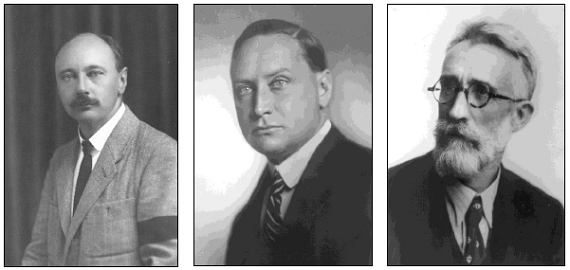
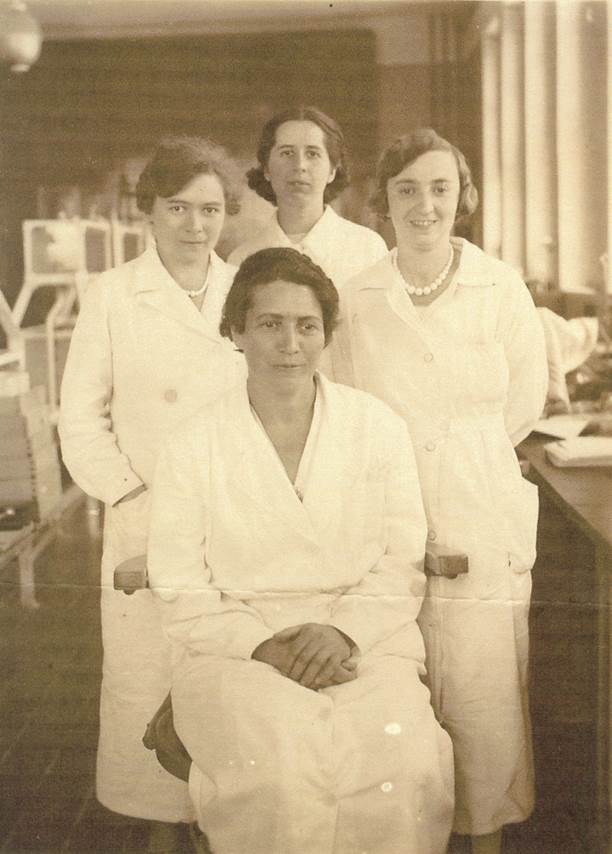 At the same time, limnologist Olga Sebestyén joined the Institute who returned from the United States of America to contribute to Balaton research.
At the same time, limnologist Olga Sebestyén joined the Institute who returned from the United States of America to contribute to Balaton research.
Before 1945 the Institute had a very small number of "permanent staff": 6-11 chief employees, reserachers and 4-5 employee. However, a great number of guest researchers visited the Institute, increasing not only the scientific results of the era, but also refreshing its atmosphere.
From 1927 until the beginning of wartime 1944 the Institute was visited by 765 domestic and 160 foreign researchers, during which time:
- Biodiversity, morphological and functional variability of the micro- and macroscopic wildlife of Lake Balaton were revealed;
- Vascular plants of Lake Balaton and the Uplands were described;
- Bird populations of the Lake Balaton, the Little-Balaton and the Uplands’ was revealed;
- Chemical properties of Lake Balaton and the effects of the alkalinity on wildlife were discovered;
- By documenting the invasion of Lake Balaton by the zebra mussel (Dreissena polymorpha), the Caspian mud shrimp (Corophium curvispinum) and other invertebrates in 1930, the Institute provided a starting point to the limnological scientific community for the research on the nature and dynamics of invasions and invasive species, and the elaboration of its management;
- The results of the 1930 plankton research in Tihany were among the first to characterize the laws of the amount and vertical migration of phyto- and zoo plankton present in freshwater lakes;
- Quantitative studies of bacterioplankton in Lake Balaton were among the first in freshwater bacteriology;
- Animal behaviour and learning studies performed on Eurasian minnow (Phoxinus phoxinus) were at the forefront of international science and showed the high degree of adaptation to the environment and trainability o this animal;
- At the service of the famous Hungarian pharmaceutical industry and medical research, the effects of several molecules were studied in water organisms since the 1930s;
- Among the first in the world, in the 1930s, phenomenon of algal blooms as a process of water discoloration of Lake Balaton and natronic lake was described leading to the formulation of the eutrophication and was described as a water quality problem of anthropogenic origin;
- Intensive studies on significance of UV radiation and underwater light environment on plant life were performed in the early 1930s;
- In the 1930s, limnologists of Tihany approached habitats and their communities (plankton, seston, neuston, pleuston, leiss, psammon, etc.), and aspects of biological productivity of nutritional relationships, food webs and associations in a complex way;
- In the 1940s the Tihany limnologists had a holistic approach to the ecosystem study of the lake that was inspired by the diverse phylogenetic origin and variable life forms of producers, and consumers.
- The Institute made technical and methodological developments and production of a number of hydrobiological sampling devices that later distributed worldwide. In Tihany during a one week workshop Hans Utermöhl demonstrated the reverse plankton microscope he invented and developed, and used it with Abbey’s version of drawing tool for microscopes and a drawing table;
- The use of microscopic photographic techniques for morphological and biometric measurements was a pioneering method in Tihany in the early 1930s, much like computer-aided image analysis in the present time;
- The study of alternate-current narcosis of fish in Tihany helped to develop the electric fishing method.
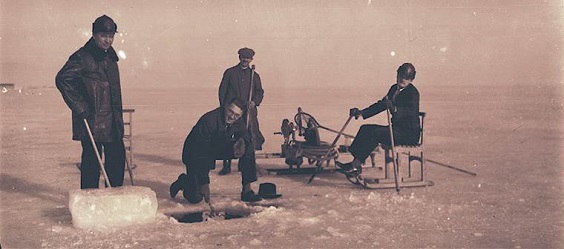
From the very beginning, physiological research in Tihany concentrated on the physiology of neural control, mainly in crabs, mussels, snails, tadpoles and laboratory rats. These studies were complemented with research in the field on morphology and histology. As of the early 1930s, significant genetic research was conducted in Tihany on Drosophila as well. The Institute provided opportunities for special physiological, pathological and pharmacological studies and research. The laboratories were so well equipped that they attracted physiologists from around the world. Between 1930 – 1942 such famous scientists have worked in Tihany as Nobel Prize winners Albert Szent-Györgyi, Otto Loewi and Paul Weiss.
In the final days of World War II, director Sándor Wolszky achieved the Institute in Tihany’s protection under the International Red Cross, and the entire equipment of the institute was saved from the destructions of war.
Between 1945 and 1962 the profile of the Institute was expanded by bacteriological, pathophysiological and pharmacological research, and according to tradition it operated under continuous international visitations. During this period, Elek Woynárovich worked out the method of the artificial propagation of carp (Cyprinus carpio) that has been used all over the world ever since, based on the use of urea to eliminate the glutinosity of the stripped eggs. In the same period Lajos Felföldy patented the foundation for large-scale production of algae at the institution’s glass house.
From 1962, after the institute came under the jurisdiction of the Hungarian Academy of Sciences, the new director János Salánki developed a strong and effective comparative neurobiological research line of work. Exemplary co-operation in electrophysiology, biochemistry and histology was implemented within the new department of Experimental Zoology. Salánki writes: "No matter how far the nervous system of a clam or snail seems from that of humans, the phenomena observed in this animals in its elementary level of operation... directly provide help to understand the physiology, pathology, chemistry and pharmacology influence of the human nervous system. Similarly, the study of the biology of the Lake Balaton, observation of its possible changes, the nutritional habits of organisms and their metabolism are related to various utilizations of the lake and production issues in the water." By this time, Balaton research had been neglected for a while. Nonetheless, to János Salánki’s great merit, at difficult times he kept limnology in Tihany "at idle”, while later elevated it to the level of international scientific organizations and started a new, modern, performance-focused scientific publication strategy. In fact, from 1970 he undertook lake research management with a new vigour which was continued until his death.
Due to the massive fish kill, reed decay and most of all the dramatic deterioration of water quality of Lake Balaton between 1965 and 1975, various government programs were initiated from the 70’s to save the lake. This has prompted the Hungarian Academy of Sciences to re-establish hydrobiology as the institute’s main profile, and to emphasize this the Institute’s name was changed to “Balaton Limnological Research Institute" in 1982. Researchers at the institute established the scientific foundations of the reversal of lake eutrophication. They explored the causes of reed decay and fish mortalities, the dynamics of the spread of invasive species and possible options to fight them. Researchers found the causes of mass algae production, and developed the scientific basis for government actions and the monitoring through the three combined aspects of field observations, laboratory experiments and modelling. In this new era, limnologists had an alliance with the physiologists, biochemists and molecular biologists. The result of outstanding scientific and applied research, as well as investments in lake restoration, is the visibly excellent water quality of Lake Balaton even today.
There are 43 researchers working at the institute today. Thanks to the wide range of international relations, the institution continues to provide research opportunities to foreign guest researchers and Ph.D. scholarship participants. There are regular summer courses that provide education and accommodation to 20-30 undergraduate students. Today the limnologists do not restrict their research area to Lake Balaton, but are studying surface waters of the whole Pannon ecoregion and provide their expertise to perform important tasks for the European Union and other international organizations in environmental water activities. An indication of the researchers’ publication activity is that despite the relatively small number of staff a new scientific publication appears every four days.
The Tihany institute’s division directors and directors since the 1927 opening are:
Béla Hankó (1927-1929);
Frigyes Verzár (1927-1936);
Béla Entz (1929-1943);
Sándor Wolsky (1943-1945);
Aladár Beznák, (1945-1948);
János Horváth (1949-1952);
Endre Dudich (1952);
Elek Woynárovich (1956-1960);
János Salánki (1962-1990);
Sándor Herodek (1990-2004);
Péter Bíró (2005-2012);
László G.-Tóth (2013 - present)
Prof. László G.-Tóth , DSc.

